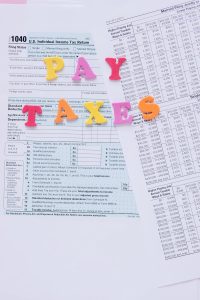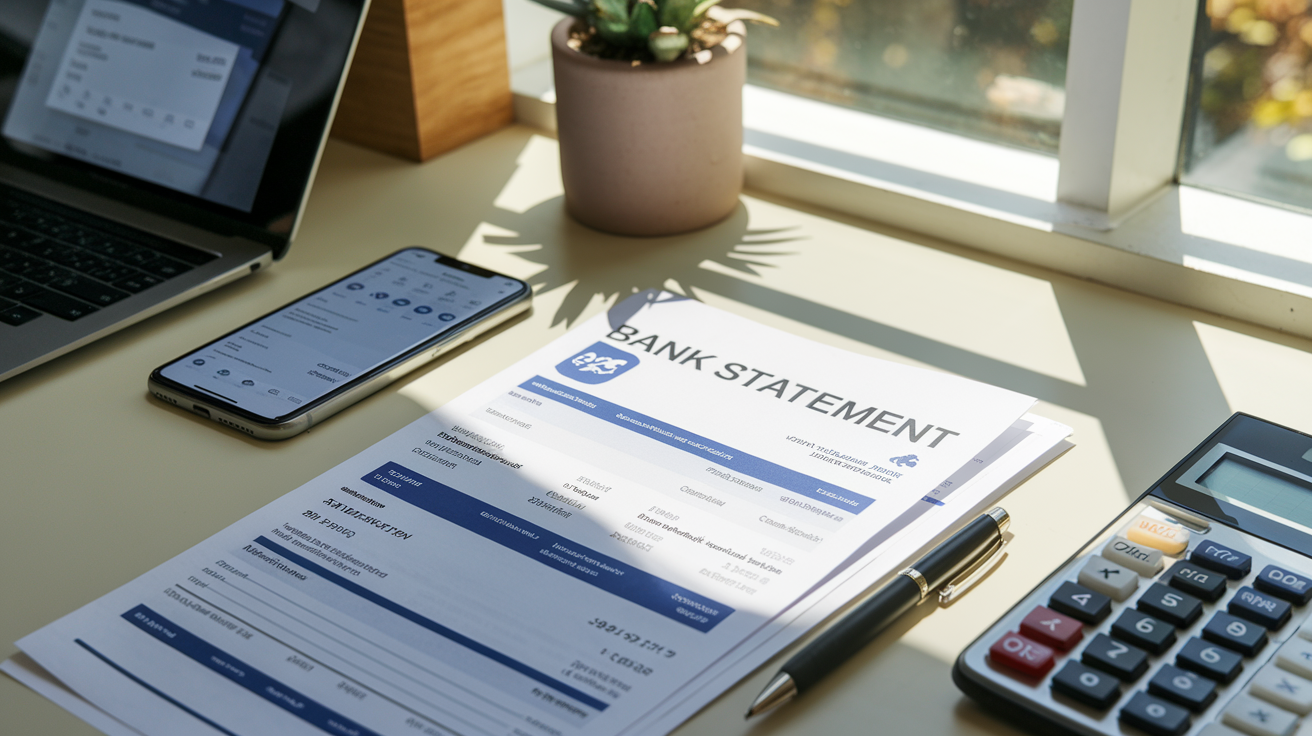Imagine being able to spot hidden fees, track your spending habits with precision, and make informed decisions about your money. That’s the power of truly comprehending your bank statement. In this post, we’ll reveal the secrets behind those mysterious numbers and codes, transforming you from a confused observer to a savvy financial detective.
Before we proceed if you ever need any customised bank statement or paystubs for any verification purposes like for apartment rent, car loan, google search on “Proofofstatement Software“ and thank me later.
Get ready to dive into the world of bank statements as we explore their components, crack transaction codes, analyze patterns, and show you how to leverage this information for smarter financial planning. Plus, we’ll share essential tips on protecting your financial data in an increasingly digital world. Let’s embark on this journey to financial clarity together!
Understanding Bank Statement Components

Account Information Decoded
Your bank statement’s account information section is a goldmine of crucial details. Let’s break it down:
-
Account Number: Usually partially masked for security
-
Account Holder Name: As registered with the bank
-
Statement Period: Typically monthly, but can vary
-
Branch Details: Where your account is primarily managed
| Information | Description | Importance |
|---|---|---|
| Account Type | Savings, Checking, etc. | Determines interest rates and fees |
| IBAN/SWIFT | International banking codes | Essential for international transactions |
| Routing Number | Bank’s unique identifier | Needed for direct deposits and transfers |
Transaction Details Explained
This section is the heart of your bank statement, detailing all financial activities:
-
Date: When the transaction occurred
-
Description: Brief explanation of the transaction
-
Amount: Sum involved in the transaction
-
Running Balance: Account balance after each transaction
Understanding transaction codes can provide deeper insights into your financial habits and help in budgeting effectively.
Balance Summaries Demystified
Balance summaries offer a quick snapshot of your financial health:
-
Opening Balance: Amount at the start of the statement period
-
Closing Balance: Final amount at the end of the period
-
Total Deposits: Sum of all incoming funds
-
Total Withdrawals: Sum of all outgoing funds
Hidden Fees Exposed
Don’t overlook the fine print! Banks often include various fees:
-
Maintenance Fees: Regular charges for account upkeep
-
ATM Fees: Charges for using out-of-network ATMs
-
Overdraft Fees: Penalties for insufficient funds
-
Foreign Transaction Fees: Extra charges for international purchases
Regularly reviewing these components can help you manage your finances more effectively and avoid unnecessary charges. Next, we’ll delve into interpreting transaction codes to gain even more insight from your bank statements.
Interpreting Transaction Codes

Common Code Meanings
Understanding transaction codes is crucial for effective bank statement analysis. Here’s a quick reference table for common codes you might encounter:
| Code | Meaning |
|---|---|
| ACH | Automated Clearing House |
| ATM | Automated Teller Machine |
| DD | Direct Deposit |
| POS | Point of Sale |
| TFR | Transfer |
These codes help categorize transactions, making it easier to track your spending and income patterns. For instance, ‘DD’ often indicates your paycheck, while ‘POS’ typically represents purchases made with your debit card.
Spotting Unusual Activity
Familiarizing yourself with your typical transaction codes can help you quickly identify potential fraudulent activity. Look out for:
-
Unfamiliar merchant names
-
Unusual transaction amounts
-
Unexpected international transactions
-
Multiple small transactions in quick succession
Deciphering Merchant Names
Merchant names on bank statements can sometimes be cryptic. Here are tips to decipher them:
-
Look for abbreviations of company names
-
Search online for the exact name as it appears
-
Check for location codes (city or state) following the name
-
Note any numbers that might represent store locations
By mastering these interpretation skills, you’ll gain a deeper understanding of your financial activities and be better equipped to manage your personal finances effectively.
Analyzing Statement Patterns

Identifying Spending Habits
Analyzing your bank statement patterns is crucial for understanding your financial behavior. Start by categorizing your expenses into essential and non-essential items. Look for recurring transactions to identify subscriptions or regular bills. Create a simple table to visualize your spending:
| Category | Amount | Percentage |
|---|---|---|
| Housing | $1200 | 40% |
| Food | $600 | 20% |
| Transport | $300 | 10% |
| Entertainment | $300 | 10% |
| Others | $600 | 20% |
Recognizing Income Trends
Examine your income sources and frequency. Are they consistent or fluctuating? Look for:
-
Regular salary deposits
-
Freelance payments
-
Investment returns
-
Seasonal income variations
Detecting Cash Flow Issues
Pay attention to:
-
Overdraft fees
-
Late payment charges
-
Declined transactions
-
Periods with low account balance
These can indicate potential cash flow problems that need addressing.
Uncovering Saving Opportunities
After analyzing your spending and income, identify areas for potential savings:
-
Reduce non-essential expenses
-
Negotiate better rates for recurring bills
-
Cancel unused subscriptions
-
Look for cheaper alternatives to regular purchases
By understanding these patterns, you can make informed decisions to improve your financial health. Next, we’ll explore how to leverage this valuable statement data for effective financial planning.
Leveraging Statement Data for Financial Planning

Budgeting Insights
Analyzing your bank statement sample provides valuable budgeting insights. By reviewing your transaction history, you can identify spending patterns and allocate funds more effectively. Create a simple budget based on your statement data:
| Category | Average Monthly Spend | Percentage of Income |
|---|---|---|
| Housing | $1,200 | 30% |
| Food | $400 | 10% |
| Transport | $300 | 7.5% |
| Utilities | $200 | 5% |
| Savings | $500 | 12.5% |
Expense Categorization Techniques
Categorizing expenses is crucial for financial planning. Use these techniques:
-
Color-coding: Assign colors to different expense types
-
Digital tools: Utilize apps that automatically categorize transactions
-
Custom labels: Create personalized categories for unique spending habits
Investment Opportunities
Your bank statement can reveal potential for investments. Look for:
-
Surplus funds in your checking account
-
Regular savings patterns
-
Low-interest earnings on large balances
Consider diversifying into higher-yield options like index funds or bonds.
Debt Management Strategies
Analyze your statement to develop effective debt management strategies:
-
Identify all recurring debt payments
-
Calculate the total interest paid monthly
-
Prioritize high-interest debts for faster repayment
-
Consider consolidation options for multiple debts
Tax Preparation Benefits
Bank statements are invaluable for tax preparation. They provide:
-
Accurate income records
-
Documentation of tax-deductible expenses
-
Proof of charitable contributions
-
Evidence of business-related transactions
By leveraging your bank statement data, you can optimize your financial planning, make informed investment decisions, and streamline your tax preparation process. Next, we’ll explore how to safeguard this crucial financial information to protect your financial well-being.
Safeguarding Your Financial Information

Spotting Identity Theft Red Flags
When reviewing your bank statements, be vigilant for these red flags that may indicate identity theft:
-
Unfamiliar transactions or merchant names
-
Unexpected changes in account balances
-
Multiple small charges followed by larger withdrawals
-
Transactions from unusual locations
Always report suspicious activity to your bank immediately.
Secure Statement Storage Methods
Proper storage of bank statements is crucial for protecting your financial information. Consider these methods:
-
Digital storage:
-
Encrypted cloud storage
-
Password-protected local drives
-
Secure document management apps
-
-
Physical storage:
-
Fireproof safe
-
Safety deposit box
-
Locked filing cabinet
-
| Storage Method | Pros | Cons |
|---|---|---|
| Digital | Easy access, searchable | Potential cybersecurity risks |
| Physical | Tangible records, no internet required | Risk of physical damage or theft |
Digital vs. Paper Statements: Pros and Cons
Choosing between digital and paper statements involves weighing several factors:
Digital Statements:
-
Eco-friendly
-
Immediate access
-
Easy to organize and search
-
Potential cybersecurity risks
Paper Statements:
-
Tangible records
-
No internet required
-
Risk of physical loss or damage
-
Increased risk of mail theft
Ultimately, the choice depends on your personal preferences and security comfort level. Many opt for a combination of both methods for added protection.
Now that we’ve covered safeguarding your financial information, let’s explore how to effectively use this protected data for your financial planning and decision-making.

Bank statements are powerful financial tools that offer a wealth of information about your financial health. By understanding their components, decoding transaction codes, and analyzing statement patterns, you can gain valuable insights into your spending habits and financial trends. This knowledge empowers you to make informed decisions and take control of your financial future.
Remember to use your bank statements as a foundation for effective financial planning. Regularly review your statements, leverage the data to set realistic financial goals, and implement strategies to improve your financial well-being. Always prioritize the security of your financial information by following best practices for safeguarding your statements and personal data. By mastering these bank statement secrets, you’ll be well-equipped to navigate your financial journey with confidence and success.




